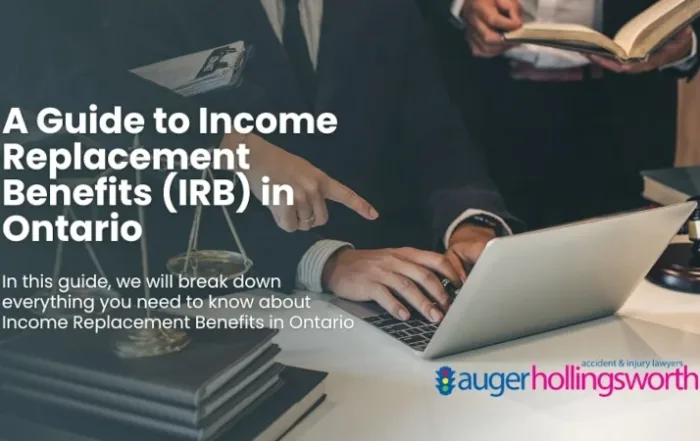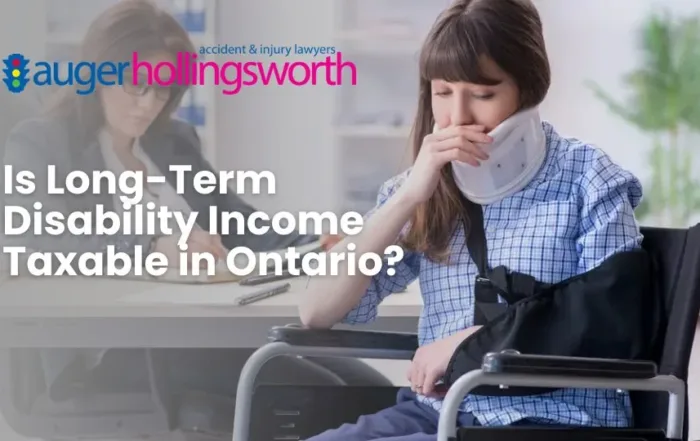De-Mystifying Long-Term Disability
When you’re ill or hurt and can’t work, disability benefits can prove essential. After all, the last thing you want to worry about when focused on getting better is how you’re going to support yourself and your family. The financial assistance allows you to prioritize one thing and one thing only: recovery.
As simple as that concept may sound, the world of long-term disability insurance is a complex one and can become even more confusing when you’re struggling to make sense of an illness. To provide some clarity to the disability landscape and language, we offer a few definitions and context, with more to follow in this ongoing blog series.
Long vs short term disability
The amount and length of coverage that is available to you depends on your disability insurance plan, whether short or long-term. Generally speaking, however, this is what each policy provides:
Short-term disability insurance
Short-term disability (STD) insurance covers the expenses you may incur for a short period of time, once your sick leave is completed if you’re employed. Short-term disability benefits usually continue for 6 months, although they could last as long as a year. And they typically cover 70% of an employee’s regular earnings. Most employers cover these benefits with their group policy, but some employees also rely on Employment Insurance (EI) disability benefits.
Long-term disability insurance
Long-term disability (LTD) coverage begins after STD or EI benefits run out. In these cases, the disability has made it impossible for the individual to return to work. Every policy is different but LTD benefits often cover income replacement as well as medical treatment and rehabilitation. LTD benefits extend beyond the short-term time period, usually lasting up to two years if a person is deemed unable to work at their job or any job (see the definition of “any occupation” below). What’s more, if after that two-year period, someone is still incapable of returning to work, they may continue to receive benefits until they turn 65.
Keep in mind, however, that the amount of LTD insurance benefits you receive will be reduced by other sources of disability income, such as Canada Pension Plan (CPP) disability benefits or Workplace Safety and Insurance benefits (WSIB).
Eligibility
To be eligible for LTD insurance, you must either be employed by a company that has invested in a group insurance policy or have bought an insurance policy on your own. Every plan has specific disability requirements that will determine whether you qualify for benefits when you’ve fallen ill or have been in an accident that renders you unable to work. So best to read the fine print.
Conditions covered by LTD
A range of medical conditions are technically covered by LTD insurance. Some conditions, like a brain injury, broken bones and cancer, maybe mostly physical in nature. Other conditions can be emotional or mental, such as depression or anxiety (we will explore these more extensively in part 2 of this series). In short, so long as a condition causes you to experience “total disability” as defined by your policy, and an inability to perform your duties at work or elsewhere, you may qualify for long-term disability.
Pre-Existing Conditions
The majority of long-term disability plans will exclude pre-existing conditions. Those conditions can lead to you being denied LTD insurance despite otherwise qualifying due to your disability. What that means exactly depends on your specific plan, but pre-existing conditions generally include any physical, mental, or emotional condition that prompted you to see a medical professional for treatment shortly before you obtained coverage. Common pre-existing conditions include cancer, asthma, heart disease, arthritis, depression, and anxiety.
The Qualifying Period
Whether called a waiting period, elimination period or qualifying period, the term refers to the amount of time you must wait between first becoming disabled and when you’re eligible for long-term disability benefits. The exact length of these periods depends on your policy, but they typically range between three to six months. During the waiting period, an applicant must be unable to work and continuously disabled by their condition. They usually rely on short-term disability benefits and sick days as they await the response from their insurer.
Own vs Any Occupation
Within your disability insurance policy, your insurer may distinguish between any-occupation and own-occupation coverage. When first applying for benefits, an applicant only needs to demonstrate that they’re incapable of performing his or her “own occupation”, that they’re unable to work at a current or most recent occupation.
After some time, however, they may need to demonstrate they can’t perform “any occupation”. Under any-occupation coverage, if you can’t work at your own job but can work at another one – even if it requires less responsibility or pay – you aren’t considered disabled enough to receive benefits.
We can help
The lawyers at Auger Hollingsworth have helped many clients attain long-term disability benefits after they’ve been denied or terminated prematurely. Our successful track record, client satisfaction and years of experience, contribute to our respected reputation as one of the hardest-working teams in the country.
If you want to us to help demystify other complexities of the LTD world, or to discuss your long-term disability benefits and how we can help you secure the compensation you deserve, call us at (613) 233 4529 or email us at info@ottawalawfirm.ca. Or, to learn more, visit our Long Term Disability Insurance Denials Page.














